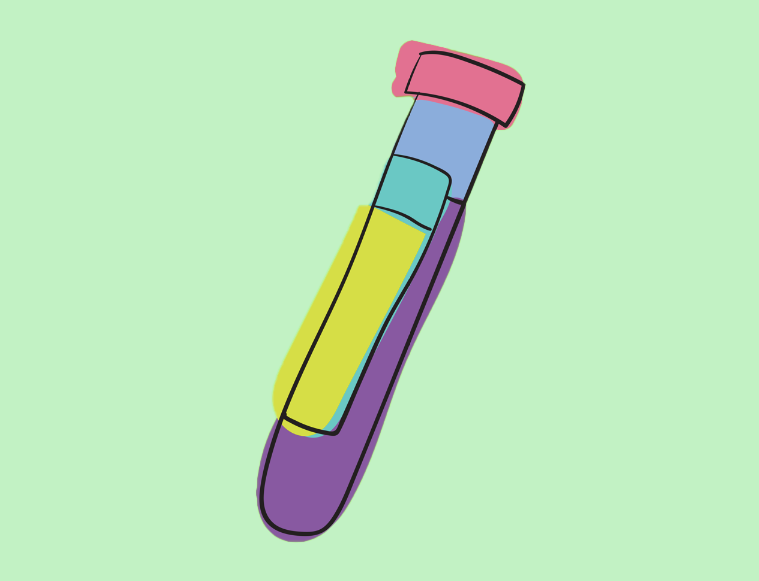Before Sex
This section describes prevention options that can be used before sex, including vaccines, PrEP (Pre-Exposure Prophylaxis), testing and treatment, U=U, making a plan, and having a conversation with your partner(s).
Vaccines
Vaccines can prevent a number of sexually transmitted infections (STI). Most STIs do not have a vaccine, but there are vaccines available for Hepatitis A & B, as well as HPV. If you don’t know whether or not you’ve had these vaccinations (some are often given when you’re quite young), ask your healthcare provider or the department of Public Health.
While some argue that HPV vaccinations are less effective for adults who have already been sexually active, increasing evidence suggests that there are potential benefits of vaccination for adults of all ages, especially men who have sex with men, and trans women.
Vaccination appointments can take time to arrange and some vaccines can require multiple doses, months apart from one another. If you plan to use vaccinations as a part of your prevention strategy, consider planning well in advance. In Alberta, some people can access the Hepatitis A & B and HPV vaccines for free. You can find if you fit that criteria at immunizealberta.ca.
PrEP (Pre-Exposure Prophylaxis)
PrEP (Pre-Exposure Prophylaxis) is an HIV medication that is used by someone who is HIV negative in advance of possible exposure to HIV to prevent transmission. PrEP acts like a chemical shield which stops HIV from making more copies of itself, ultimately preventing someone from becoming HIV positive, even if they were exposed to the virus.
PrEP is most often taken daily, though some people take it intermittently (on-demand). When taken at least four times per week, PrEP reduces the risk of HIV infection by 99% (CDC). PrEP does not provide protection against other STIs. PrEP can be a safe and effective HIV prevention option for many different people who are at a higher risk of HIV transmission, regardless of race, ethnicity, sexual orientation, or gender identity.
If you feel that PrEP might be right for you, speak with your healthcare provider. The process of finding a prescriber and completing the necessary screening required before you receive your PrEP prescription can often take several weeks. If you plan to use PrEP as part of your prevention strategy, consider planning in advance. People living in Alberta who have an Alberta Health Care Card may be able to access PrEP free of charge. For more information on PrEP access, please visit prepalberta.ca.
Testing & Treatment
One of the most effective ways to prevent HIV and STI transmission is through regular testing and treatment. If you are sexually active, the best practice is to get tested after every new sex partner (or at least annually if you only have one sex partner). If you are engaged in any of the following activities, it is recommended that you get tested at least once every 3-6 months:
Sex with multiple partners;
inconsistent use of condoms or other barriers;
group sex;
intravenous drug use/needle sharing;
drug use during sex;
sex work;
or are taking HIV treatment or PrEP
You should also be tested anytime you experience symptoms. These might include:
Burning when you pee;
discharge from the genitals;
abnormal bleeding, cramping, or pelvic pain;
sores, bumps, or warts on the genitals;
and/or a sore throat.
By getting tested regularly, if you or your partners do have HIV or STIs, you can take action early to benefit your own health and to reduce the chance of passing something on to others. These actions include getting treatment, adjusting your sexual activities, and informing your previous partners to benefit their health and the health of their partners. Many STIs can be cured with treatment, eliminating the chance that you can pass them on to another person. Other STIs have no cure but can often be managed through treatment, reducing the likelihood of passing them onto others. In Alberta, you can get tested and treated for STIs through your family doctor or nurse practitioner, your local STI clinic, sexual health centre, or walk-in clinic.
U=U (Undetectable = Untransmittable)
HIV treatment is a great example of how treatment can be an effective form of prevention. When someone living with HIV accesses treatment regularly as prescribed by their healthcare practitioner, they can achieve an undetectable viral load. This means that the amount of the virus in their body is so low that it is not detected by common HIV testing.
When someone has an undetectable viral load, they cannot transmit HIV to their sexual partners. In other words, Undetectable = Untransmittable! However, it is important to note that an individual’s undetectable status may fluctuate due to gaps in treatment or other factors. If you’d like to learn more about U=U, you can check in with your healthcare provider, local sexual health centre, and/or an HIV/AIDS organization.
Making a Plan
It’s hard to stick to a plan if you don’t have one. Don’t leave your HIV and STI prevention options to the last minute. Consider the prevention options that work best for you and make a plan for how you will use them. For example, if you plan to use barrier methods like condoms or dental dams, make sure you have access to them before you enter into a situation where you might need them. Or, if you are on PrEP or HIV treatment and plan to use drugs or alcohol, set reminders on your phone so you don’t accidentally miss a dose. There is no one right way to make a plan. Prevention plans can look as different as the variety of tools and options that are available. The main idea is to make sure that you have one – and that it’s attainable. Don’t set the bar so high that you can’t reach it. And don’t be too hard on yourself if things don’t turn out exactly as you planned. Like anything else, finding prevention strategies that work for you can be a learning process. Remember: some prevention options require long-term planning. If you are relying on PrEP, HIV treatment, or vaccines as part of your prevention strategy, you may want to start planning weeks or even months in advance to make sure you have access to what you need when you need it.
Having a Conversation with Your Partner(s)
While people often think of tools like condoms or PrEP when considering possible prevention options, they sometimes overlook one of the most effective prevention strategies there is: having open communication. Having a conversation with your partner(s) before having sex is a great way to discuss a number of important things such as:
When you were last tested for HIV and STIs
Your current STI and HIV statuses and whether you’re on treatment to reduce or eliminate risk of transmission
And if you are currently living with HIV and/or STIs:
Which sexual activities you are most comfortable with and consent to and which boundaries you’d like to set
Which prevention strategies you are already using (i.e. PrEP, HIV treatment) and/or would like to use during sex (i.e. condoms, dental dams)
Sometimes when you are having sex, it might be more challenging to have these important conversations. Covering these bases before you get down to business can help give all parties involved the agency to assess the level of risk they are comfortable with. Remember that people living with HIV and/or STIs have likely experienced some form of discrimination due to their status so try to approach these conversations through kindness and empathy. You can set firm boundaries and expectations without belittling people’s experiences and preferences.













